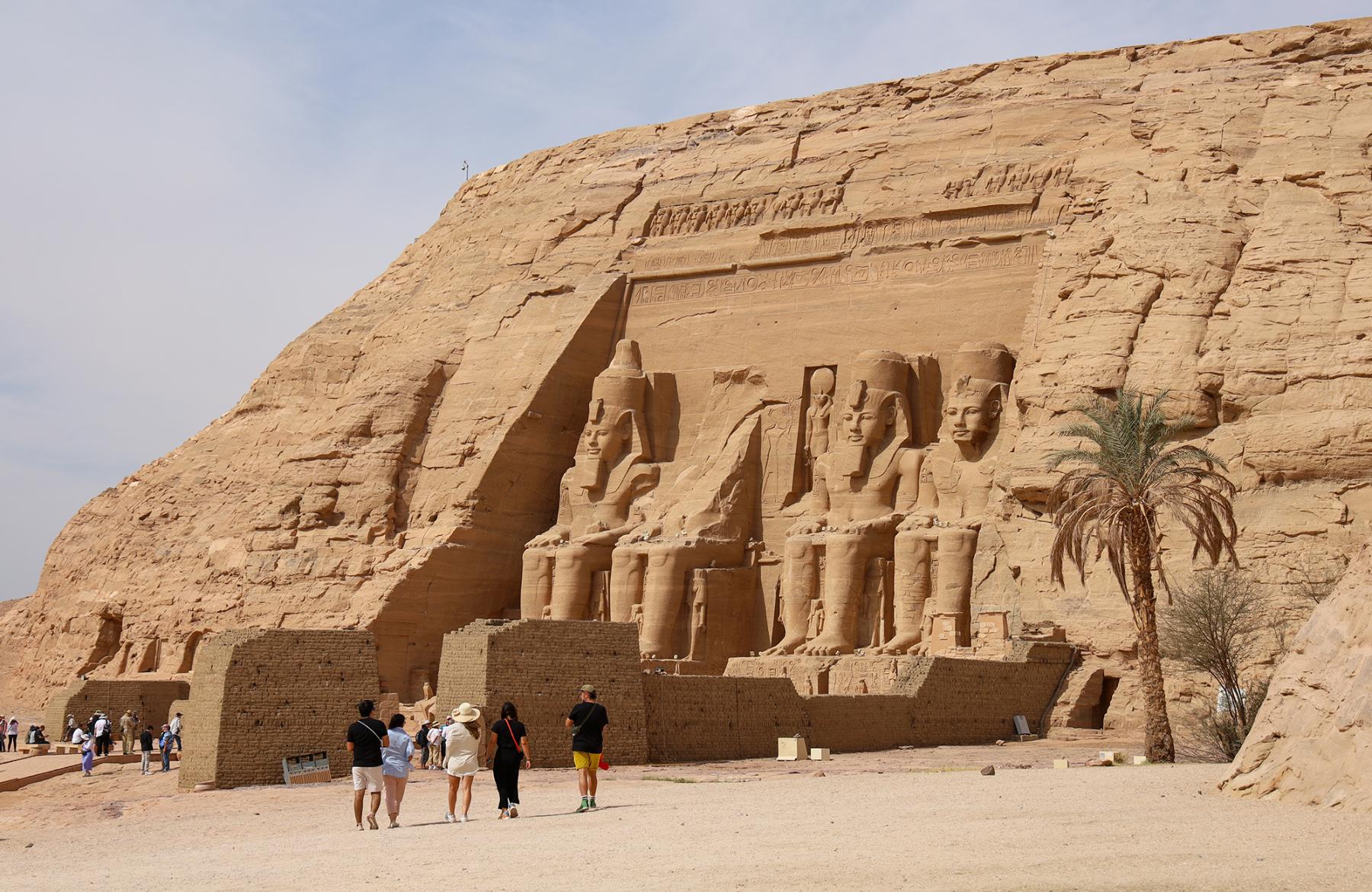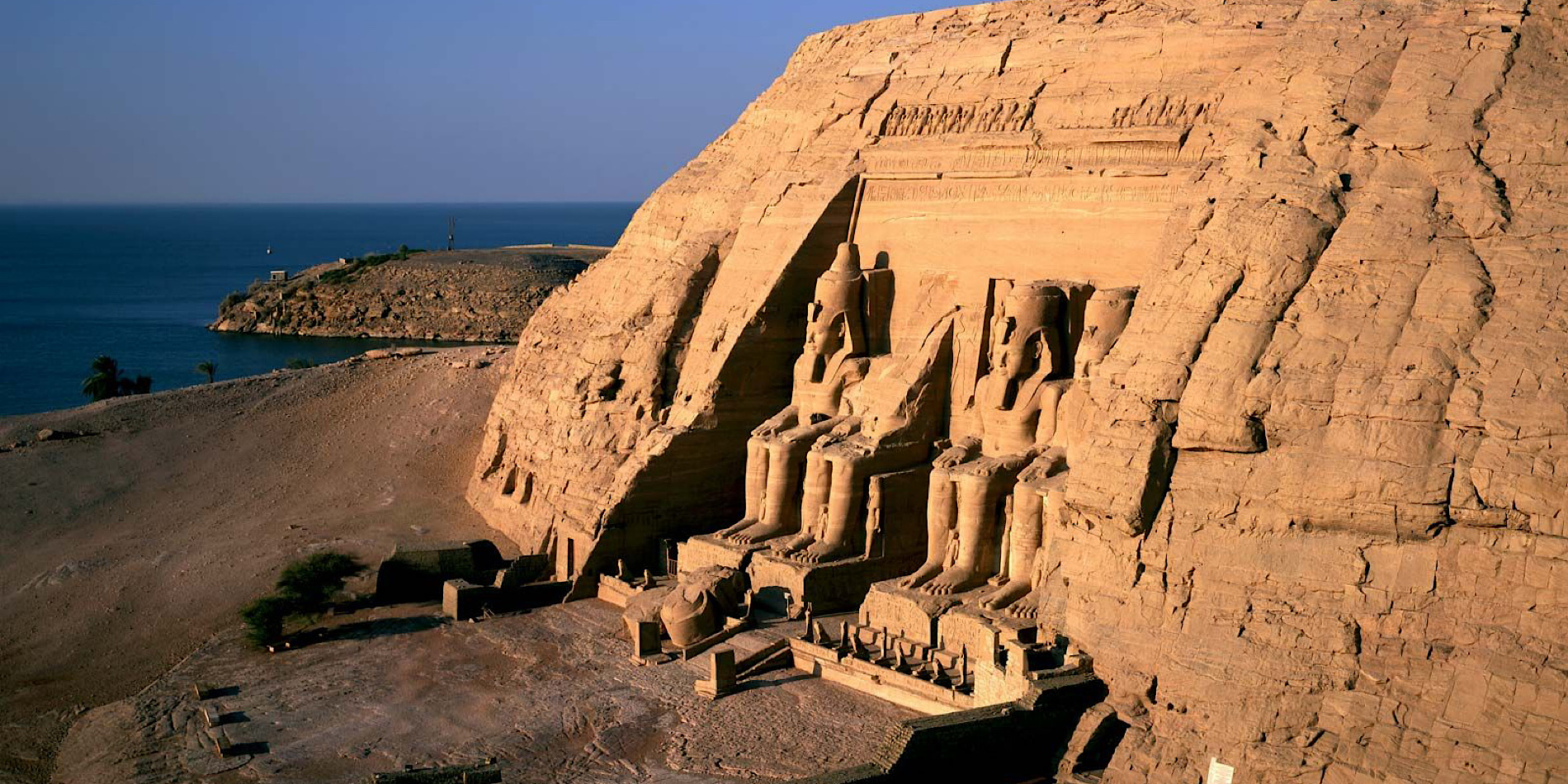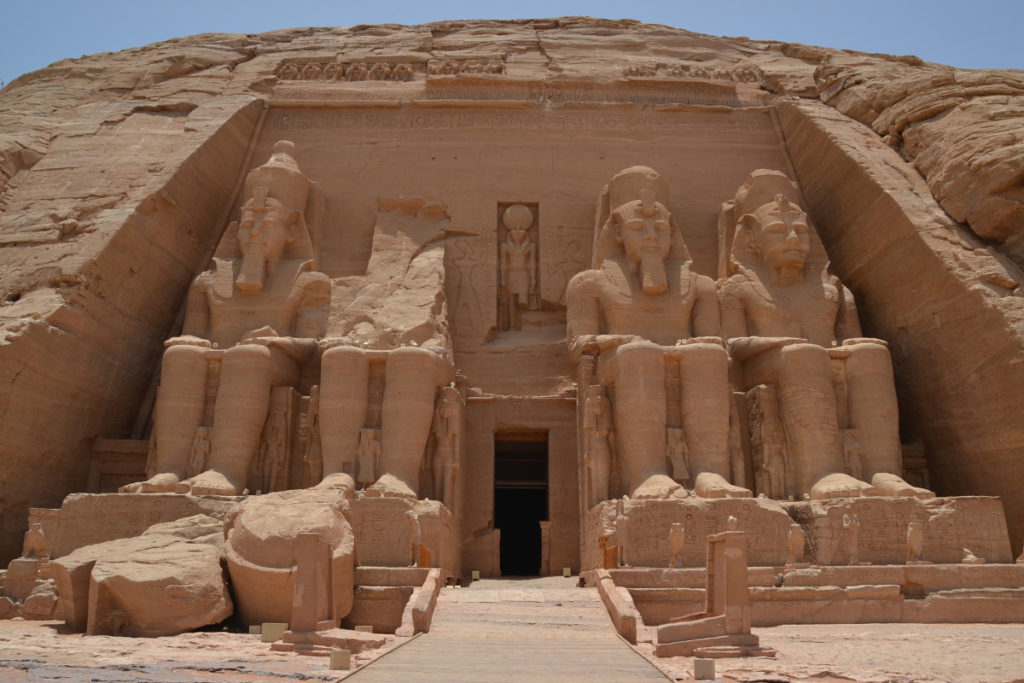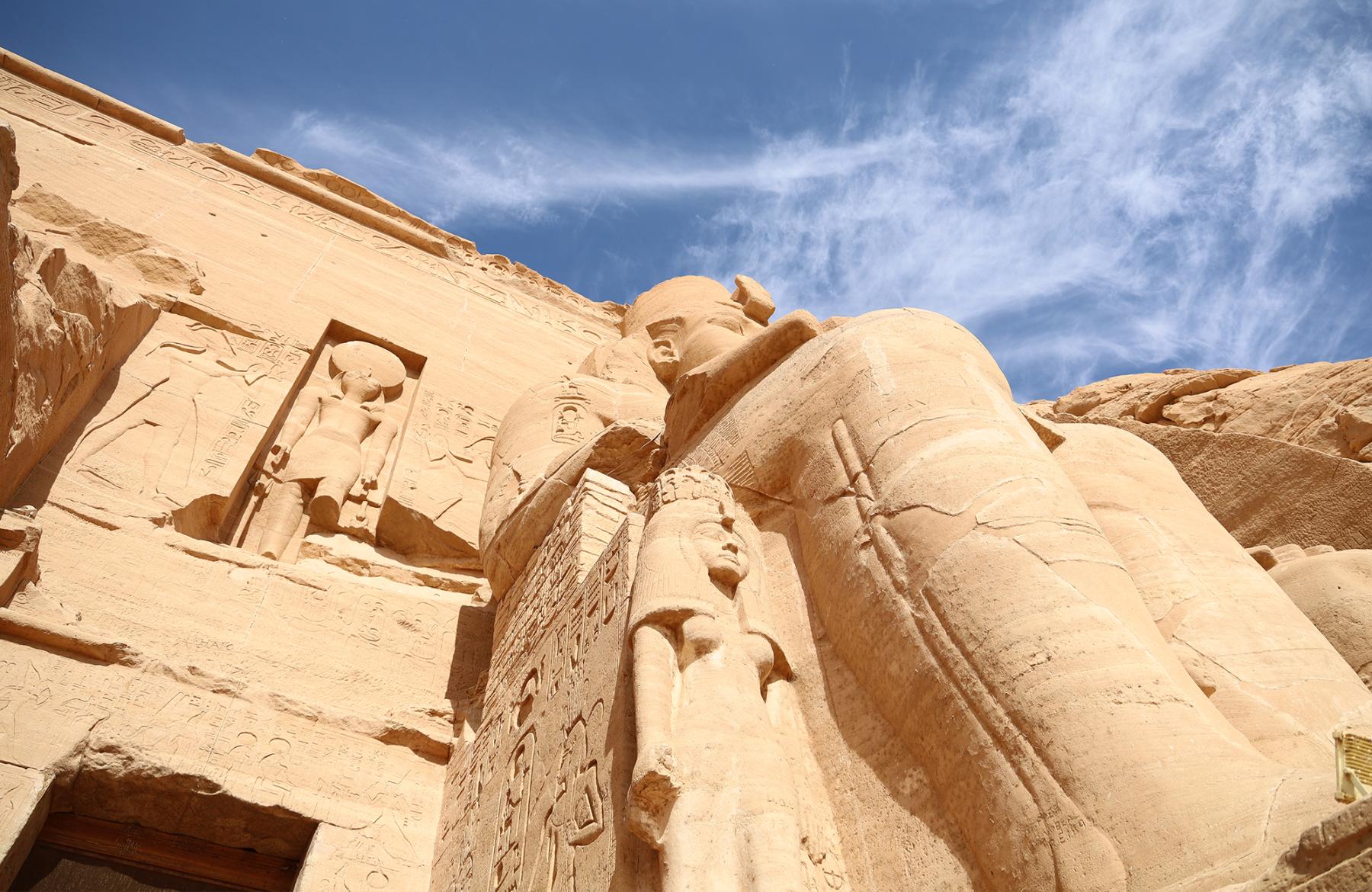Introduction
The Great Temple of Abu Simbel is one of the most iconic archaeological sites in Egypt, embodying the grandeur of ancient Egyptian civilization. Commissioned by Pharaoh Ramses II in the 13th century BCE, this magnificent rock-cut temple serves as a symbol of power, devotion, and artistic achievement. Its intricate designs and monumental scale attract countless visitors each year, drawn to its historical significance and breathtaking beauty.
Architectural Marvel
Rock-Cut Design
The temple is renowned for its remarkable rock-cut architecture, carved directly into the sandstone cliffs along the Nile River. The facade is dominated by four colossal statues of Ramses II, each standing approximately 20 meters (66 feet) tall. These towering figures, designed to intimidate and awe, are a testament to the engineering and artistic prowess of the ancient Egyptians.

Intricate Sculptures
In addition to the grand statues of Ramses II, the temple is adorned with numerous reliefs and inscriptions that tell the story of the pharaoh’s military victories and divine favor. The craftsmanship displayed in the intricate details of the figures and hieroglyphics provides valuable insights into the artistic techniques and cultural values of the time.
Symbolism and Purpose
Pharaoh’s Legacy
The Great Temple of Abu Simbel was constructed not only as a place of worship but also as a lasting tribute to Ramses II’s reign and military achievements. The colossal statues serve as a declaration of his power and divine right to rule, reinforcing his status both in life and after death. The temple stands as a testament to his legacy, intended to inspire awe in both his subjects and future generations.

Queen Nefertari
Adjacent to the Great Temple is a smaller yet equally significant temple dedicated to Ramses II’s beloved wife, Queen Nefertari. This temple features statues of the queen alongside the goddess Hathor, symbolizing her divine status and importance in the Pharaoh’s life. The presence of this smaller temple highlights the deep reverence Ramses II held for his queen, making it a poignant aspect of the site.
Cultural Significance
Religious Importance
Abu Simbel served as a center for the worship of the sun god Ra-Horakhty. The temple’s orientation is carefully planned so that twice a year, on February 22 and October 22, the rising sun illuminates the inner sanctum, highlighting the statues of Ramses II and the gods seated beside him. This astronomical alignment reflects the ancient Egyptians’ profound understanding of celestial events and their significance in religious practices, showcasing the harmony between architecture, art, and spirituality.

Preservation Efforts
Modern Relocation
In the 1960s, the construction of the Aswan High Dam posed a significant threat to the temple, as it would be submerged under Lake Nasser. To preserve this invaluable heritage site, an international campaign led by UNESCO successfully relocated the entire temple complex. This extraordinary feat of engineering involved cutting the structure into large blocks and reconstructing it on higher ground, ensuring that this masterpiece would endure for generations to come.

Conclusion
The Great Temple of Abu Simbel stands as a testament to the grandeur of ancient Egyptian civilization. Its remarkable artistry, historical significance, and the story of its preservation make it an essential destination for anyone seeking to understand the rich cultural heritage of Egypt. Visitors are treated to stunning views and intricate carvings while gaining insight into the spiritual and political life of one of history’s most powerful pharaohs. The temple continues to inspire awe and admiration, reflecting the enduring legacy of Ramses II and the extraordinary achievements of the ancient Egyptians.

